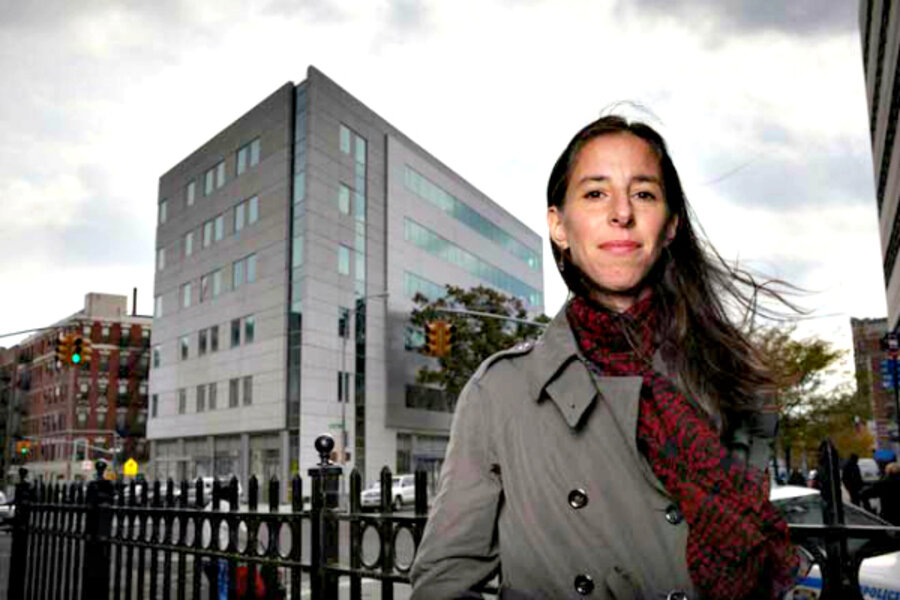A credit card that steers consumers out of debt
Loading...
Many Americans are swamped with credit card debt. It is a leading source of debt in U.S. households, right after home, car, and student loan debt. And credit card debt continues to increase. It now totals more than $850 billion, an increase of $172 billion since 2000, according to the Center for Responsible Lending.
This is not because more Americans are going out on frivolous shopping sprees. In fact, the data suggest that a significant number of low- and middle-income Americans are relying on their credit cards just to make ends meet. Data from the Center suggest 40 percent of low- and middle-income households use credit cards for basic expenses like rent and food, and nearly 50 percent use credit cards for medical expenses. More than 85 percent of the unemployed have racked up credit card debt.
Conversely, credit card companies are doing quite well. A 2012 Federal Reserve report says that banks in the credit card market had net earnings of 5.4 percent, compared with a 1.2 percent rate of return for all commercial banks. Part of this is because of predatory and in some cases unfair and deceptive lending practices by those companies that Congress took some steps to curb in 2009.
But not all credit card issuers exist for the sole purpose of reaping profits.
“We are committed to providing better financial products and services for the working poor,” said Justine Zinkin, CEO of Neighborhood Trust Financial Partners, a financial services and financial counseling nonprofit. Over the years, Neighborhood Trust has helped 30,000 lower-income people improve their financial lives.
“One of the biggest economic challenges for low-income individuals and families is burdensome credit card debt,” Zinkin said. “Once you are in debt, it’s hard to get out.”
There is a reason for that. Credit card interest rates are notoriously high, particularly for individuals with lower credit scores. And the card issuers make it all too easy to simply make the minimum payment and let the balance grow as interest expense accumulates. These minimum payments may ultimately become untenable. Nearly 10 percent of credit card holders are more than 90 days delinquent on their payments, according to the Federal Reserve.
Since so many families rely on consumer credit, Neighborhood Trust has turned the relationship between credit cards and borrowers on its head.
“We have created access to a card where the default behavior would be to help people with too much debt get out of debt and stay out of debt,” Zinkin explained.
It’s called the Trust Card, or what Zinkin calls the “un-credit card.” The idea is to facilitate a glide path for consumers to shed unhealthy credit card debt and stay out of debt while accessing affordable credit at more manageable levels. The card was developed in collaboration with Innovations for Poverty Action with funding from the Ford Foundation, and the first cards were issued a year ago.
Personalization is a key component to the Trust Card. Each cardholder is matched with a trained Neighborhood Trust financial adviser who examines the cardholder’s financial status to determine a personalized payment plan. Typically the cardholder will agree to maintain or increase their monthly payment, which when combined with a reasonable interest rate of 12 to 15 percent results in a much faster pay down schedule.
The card also requires some commitments from borrowers. Cardholders must agree to consolidate all other credit card debt onto the Trust Card. And they are prohibited from using any other high interest cards while they are using the Trust Card.
What the cardholder gains from these commitments is a product that encourages debt repayment via a simple, fixed monthly payment while still maintaining access to a limited credit line that grows as a fraction of the principal reduced.
Data on the success of the Trust Card are promising. There are zero cardholders in default. But the data are also limited. There have been 50 cards issued in a year of pilot-testing the Trust Card program.
“We would never claim that these data are robust,” Zinkin said. “But it is evidence that it is a worthy investment to push forward with a larger pilot.”
This means going to scale. Neighborhood Trust has plans for a small number of larger financial institutions to issue the cards on a broader basis.
“We have received interest from other credit unions about The Trust Card, so we know there is demand for this product,” Zinkin said.
Technology will also be crucial as the Trust Card grows, since matching each cardholder with a financial adviser may prove prohibitively expensive. So Neighborhood Trust is exploring electronic enrollment and automation of the process of designing a tailored payment schedule for cardholders.
The card is designed to ultimately benefit both borrowers and lenders. The Trust Card may not only create a healthier balance sheet and credit profile for today’s indebted consumer, but also serve as a profitable gateway product that creates a more attractive banking customer.
“Our goal is to launch enough cards in 2014 to confirm our hypothesis that when supported with financial counseling and fair alternatives, these cardholders can reduce or eliminate their credit card debt, begin to build savings, and ultimately take advantage of other savings and credit programs offered by their banks.”
Those steps might give many more Americans access to credit cards that, instead of leading to a debt quagmire, could pave the way to improved financial stability. That still leaves most of the $850 billion of consumer debt looming out there.
But the un-credit card has to start somewhere.
• Justine Zinkin is the CEO of Neighborhood Trust Financial Partners, a financial services and financial counseling nonprofit.
• This article originally appeared at PopTech, a community of global innovators that catalyze social impact through renowned Fellows programs, incubated initiatives, thought-provoking salons, and an annual conference in Camden, Maine.







